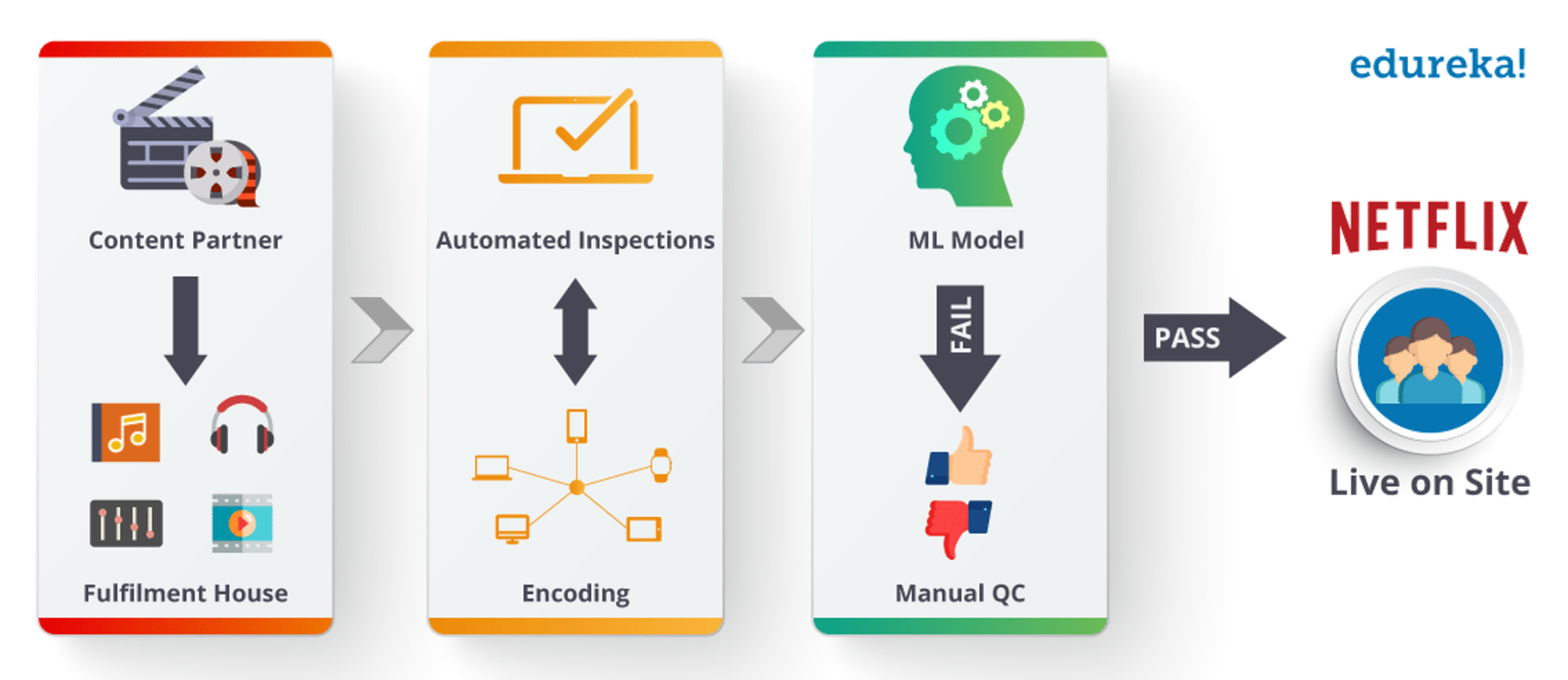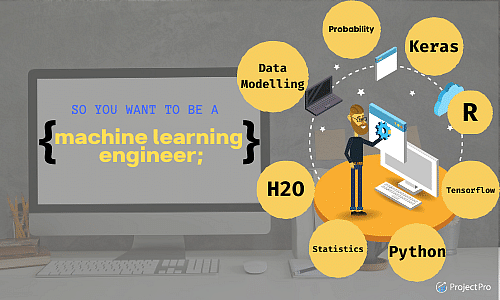All Categories
Featured
Table of Contents
- – Rumored Buzz on Is There A Future For Software...
- – The 2-Minute Rule for Machine Learning Enginee...
- – Machine Learning Engineer Learning Path Funda...
- – An Unbiased View of Machine Learning Engineer...
- – Unknown Facts About Master's Study Tracks - ...
- – Some Known Facts About Top Machine Learning ...
You probably understand Santiago from his Twitter. On Twitter, on a daily basis, he shares a whole lot of sensible things regarding machine understanding. Many thanks, Santiago, for joining us today. Welcome. (2:39) Santiago: Thank you for inviting me. (3:16) Alexey: Before we go into our major subject of relocating from software engineering to maker discovering, possibly we can start with your background.
I went to university, got a computer system science level, and I started developing software program. Back then, I had no concept concerning equipment discovering.
I know you have actually been using the term "transitioning from software application design to artificial intelligence". I such as the term "contributing to my skill set the equipment discovering abilities" more since I assume if you're a software application designer, you are currently supplying a great deal of value. By including equipment knowing currently, you're enhancing the influence that you can carry the market.
Alexey: This comes back to one of your tweets or maybe it was from your program when you contrast two methods to discovering. In this case, it was some trouble from Kaggle concerning this Titanic dataset, and you simply discover just how to address this issue making use of a specific device, like decision trees from SciKit Learn.
Rumored Buzz on Is There A Future For Software Engineers? The Impact Of Ai ...
You initially discover math, or straight algebra, calculus. When you know the mathematics, you go to maker discovering theory and you discover the theory. Four years later on, you finally come to applications, "Okay, exactly how do I use all these 4 years of mathematics to fix this Titanic trouble?" ? So in the former, you kind of conserve yourself time, I assume.
If I have an electric outlet below that I require replacing, I don't intend to go to college, invest 4 years comprehending the math behind electrical power and the physics and all of that, simply to transform an outlet. I would certainly rather start with the electrical outlet and locate a YouTube video that aids me go with the trouble.
Negative analogy. However you obtain the idea, right? (27:22) Santiago: I actually like the idea of starting with a problem, attempting to throw away what I understand as much as that trouble and comprehend why it does not work. Then order the devices that I need to solve that issue and begin digging deeper and much deeper and deeper from that factor on.
To ensure that's what I normally suggest. Alexey: Possibly we can chat a bit about learning resources. You mentioned in Kaggle there is an intro tutorial, where you can obtain and discover just how to choose trees. At the start, prior to we began this meeting, you stated a pair of publications.
The only requirement for that course is that you recognize a little bit of Python. If you go to my account, the tweet that's going to be on the top, the one that states "pinned tweet".
The 2-Minute Rule for Machine Learning Engineer: A Highly Demanded Career ...

Even if you're not a designer, you can begin with Python and work your means to more equipment discovering. This roadmap is concentrated on Coursera, which is a system that I actually, actually like. You can examine all of the training courses free of charge or you can pay for the Coursera membership to get certificates if you intend to.
To ensure that's what I would certainly do. Alexey: This comes back to among your tweets or possibly it was from your course when you contrast two approaches to knowing. One technique is the problem based technique, which you simply spoke about. You discover an issue. In this instance, it was some issue from Kaggle about this Titanic dataset, and you just discover how to fix this issue utilizing a particular tool, like choice trees from SciKit Learn.
You first discover mathematics, or straight algebra, calculus. When you know the math, you go to machine knowing theory and you learn the concept.
If I have an electric outlet right here that I need changing, I don't desire to most likely to university, spend four years recognizing the mathematics behind electrical energy and the physics and all of that, just to alter an outlet. I prefer to begin with the electrical outlet and locate a YouTube video that assists me undergo the issue.
Santiago: I truly like the concept of starting with a trouble, trying to toss out what I know up to that issue and comprehend why it doesn't function. Get the devices that I need to fix that issue and start digging much deeper and deeper and much deeper from that factor on.
Alexey: Maybe we can chat a bit concerning discovering sources. You pointed out in Kaggle there is an introduction tutorial, where you can get and discover exactly how to make choice trees.
Machine Learning Engineer Learning Path Fundamentals Explained
The only demand for that program is that you recognize a little bit of Python. If you go to my account, the tweet that's going to be on the top, the one that states "pinned tweet".
Even if you're not a developer, you can start with Python and work your means to even more device understanding. This roadmap is focused on Coursera, which is a platform that I really, truly like. You can audit all of the training courses completely free or you can spend for the Coursera registration to get certificates if you wish to.
An Unbiased View of Machine Learning Engineer Vs Software Engineer
Alexey: This comes back to one of your tweets or perhaps it was from your training course when you compare 2 approaches to discovering. In this instance, it was some problem from Kaggle about this Titanic dataset, and you simply discover how to address this problem making use of a details device, like decision trees from SciKit Learn.

You initially find out mathematics, or straight algebra, calculus. Then when you recognize the mathematics, you most likely to artificial intelligence theory and you learn the concept. Then 4 years later on, you ultimately concern applications, "Okay, exactly how do I utilize all these 4 years of mathematics to solve this Titanic issue?" Right? So in the former, you kind of save on your own some time, I assume.
If I have an electrical outlet below that I require replacing, I do not intend to most likely to university, spend 4 years understanding the math behind electrical power and the physics and all of that, simply to alter an electrical outlet. I prefer to start with the outlet and discover a YouTube video clip that aids me experience the trouble.
Santiago: I truly like the idea of beginning with an issue, trying to toss out what I recognize up to that problem and recognize why it does not work. Grab the tools that I require to fix that problem and begin excavating much deeper and deeper and much deeper from that factor on.
Alexey: Maybe we can chat a bit regarding learning sources. You stated in Kaggle there is an intro tutorial, where you can get and discover just how to make decision trees.
Unknown Facts About Master's Study Tracks - Duke Electrical & Computer ...
The only demand for that training course is that you understand a little of Python. If you're a designer, that's a great starting point. (38:48) Santiago: If you're not a designer, after that I do have a pin on my Twitter account. If you go to my profile, the tweet that's mosting likely to get on the top, the one that says "pinned tweet".
Also if you're not a developer, you can start with Python and work your way to even more artificial intelligence. This roadmap is concentrated on Coursera, which is a platform that I really, really like. You can examine all of the courses for complimentary or you can spend for the Coursera subscription to obtain certifications if you wish to.
That's what I would do. Alexey: This returns to among your tweets or possibly it was from your program when you contrast two techniques to understanding. One approach is the issue based technique, which you simply chatted around. You discover a problem. In this situation, it was some trouble from Kaggle about this Titanic dataset, and you just discover exactly how to address this problem utilizing a details device, like decision trees from SciKit Learn.
You first discover math, or straight algebra, calculus. When you know the mathematics, you go to equipment knowing theory and you discover the concept. Then 4 years later on, you finally pertain to applications, "Okay, how do I utilize all these 4 years of mathematics to fix this Titanic issue?" Right? In the former, you kind of save yourself some time, I believe.
Some Known Facts About Top Machine Learning Careers For 2025.
If I have an electric outlet right here that I need changing, I don't wish to most likely to university, invest 4 years recognizing the mathematics behind electricity and the physics and all of that, just to change an electrical outlet. I would certainly rather start with the outlet and discover a YouTube video that aids me go through the trouble.
Santiago: I actually like the concept of beginning with a problem, trying to throw out what I know up to that issue and understand why it doesn't function. Get the devices that I need to resolve that issue and begin digging much deeper and deeper and deeper from that factor on.

So that's what I typically suggest. Alexey: Maybe we can chat a bit regarding discovering sources. You mentioned in Kaggle there is an intro tutorial, where you can get and learn exactly how to choose trees. At the start, prior to we began this interview, you pointed out a couple of publications also.
The only demand for that program is that you know a little bit of Python. If you go to my profile, the tweet that's going to be on the top, the one that states "pinned tweet".
Even if you're not a designer, you can start with Python and function your way to more artificial intelligence. This roadmap is concentrated on Coursera, which is a system that I really, truly like. You can examine all of the programs completely free or you can pay for the Coursera subscription to obtain certificates if you wish to.
Table of Contents
- – Rumored Buzz on Is There A Future For Software...
- – The 2-Minute Rule for Machine Learning Enginee...
- – Machine Learning Engineer Learning Path Funda...
- – An Unbiased View of Machine Learning Engineer...
- – Unknown Facts About Master's Study Tracks - ...
- – Some Known Facts About Top Machine Learning ...
Latest Posts
Best Leetcode Problems To Practice For Faang Interviews
The Ultimate Guide To Preparing For An Ios Engineering Interview
Software Developer (Sde) Interview & Placement Guide – How To Stand Out
More
Latest Posts
Best Leetcode Problems To Practice For Faang Interviews
The Ultimate Guide To Preparing For An Ios Engineering Interview
Software Developer (Sde) Interview & Placement Guide – How To Stand Out